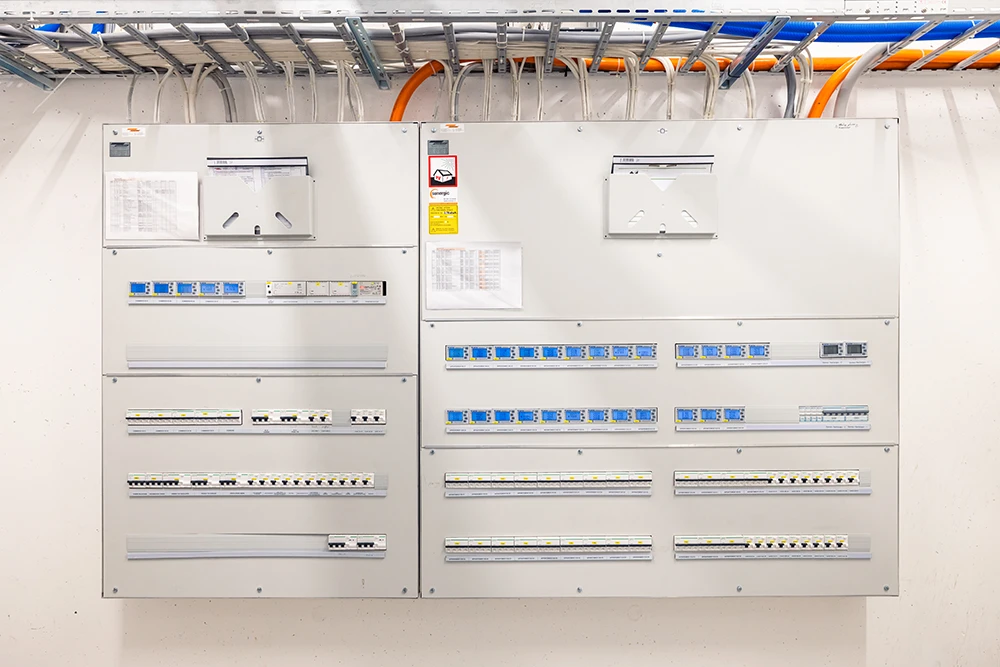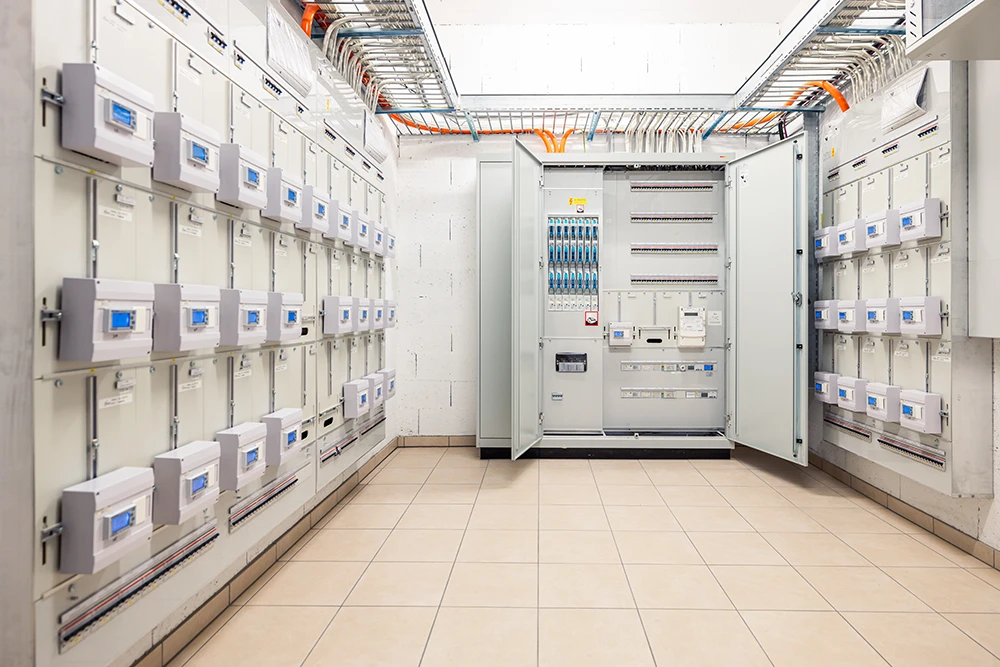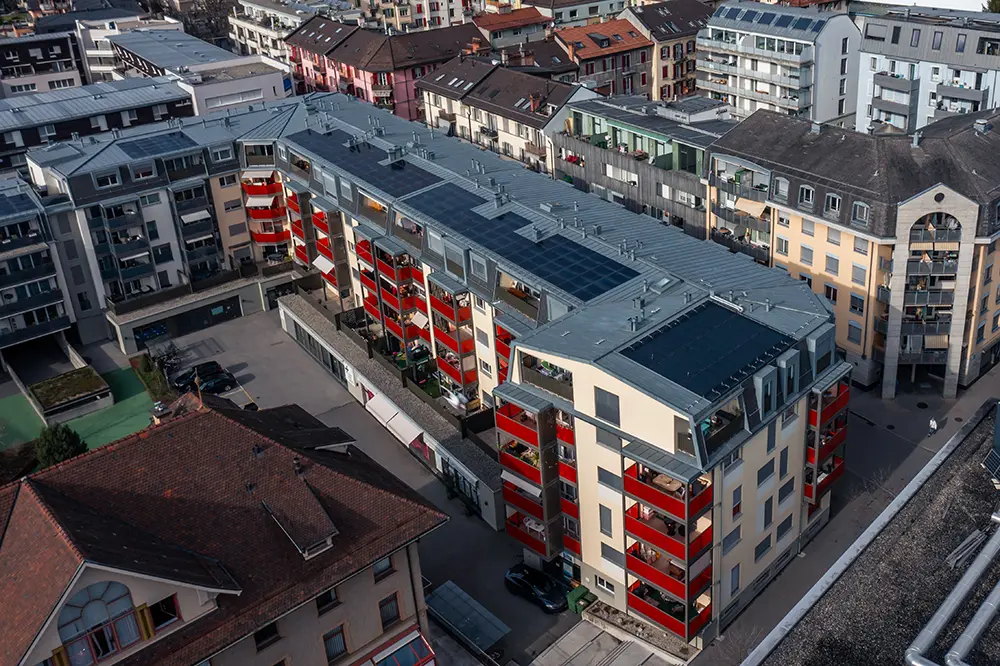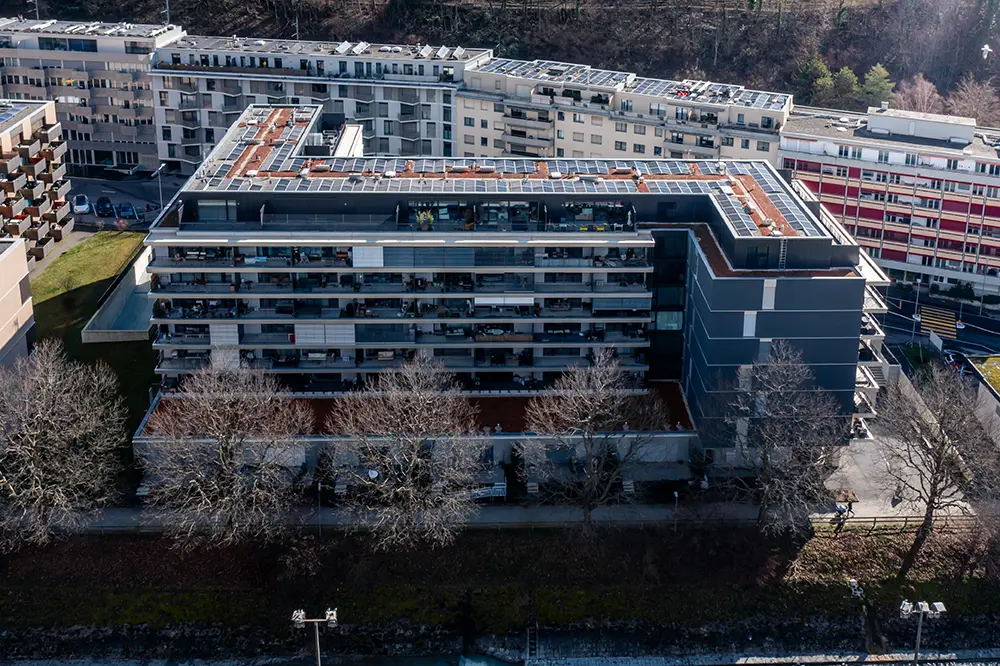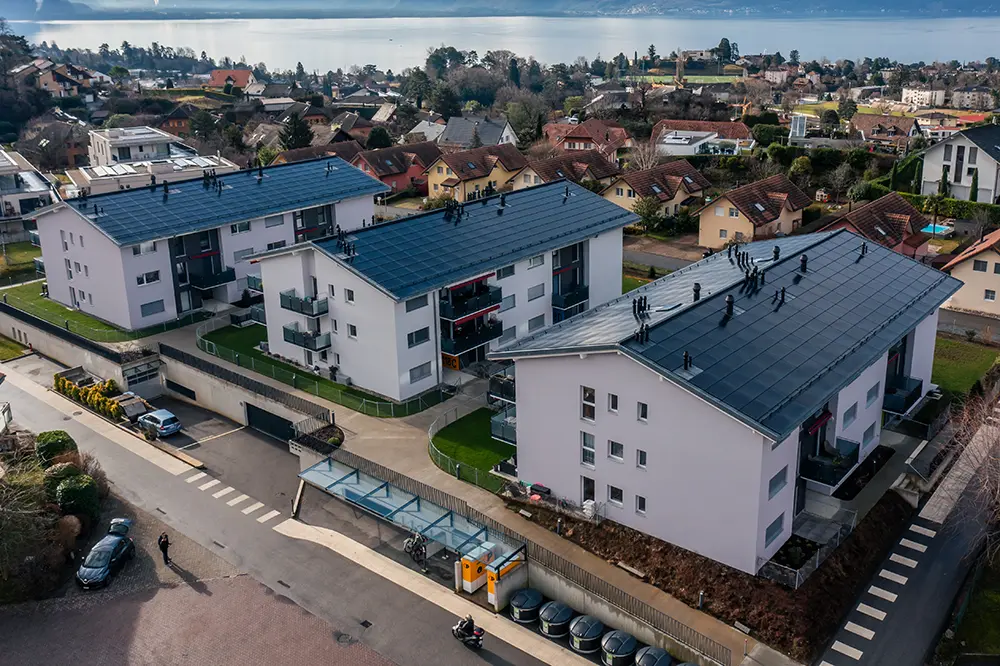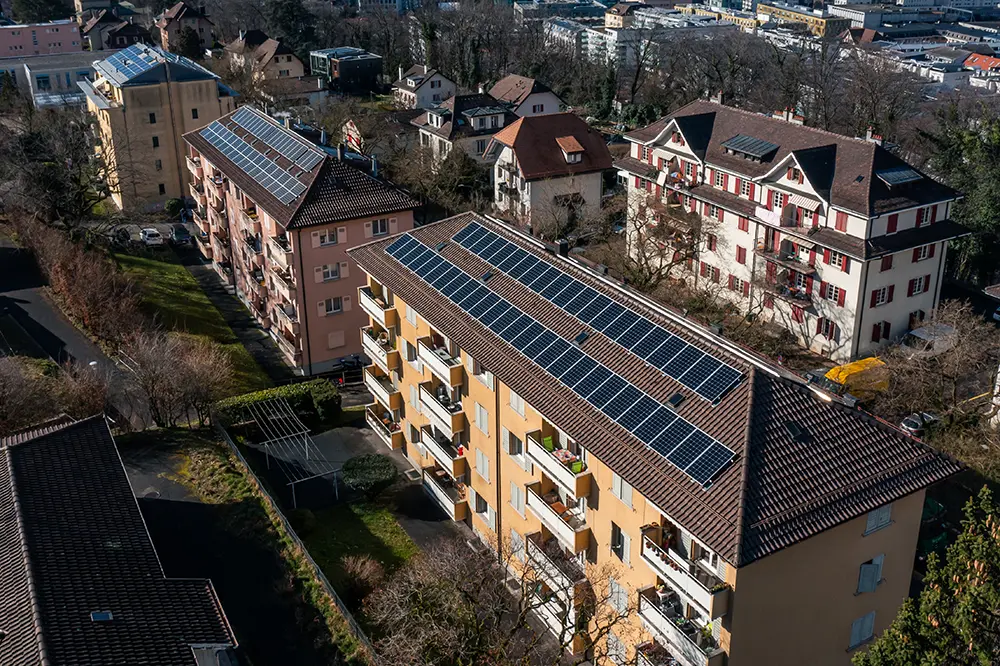- How does this work?
- How does this work?
-
Solutions
-
Other Solutions
-
Signage
Public display screens
-
-
Solutions
-
Community
Electricity metering and self-consumption
-
Heating
Settlement of building expenses
-
Mobility
Charging Stations
-
Washaccess
Collective laundry management
-
Ebike
Charging station for e-bikes
-
Optimisation
Optimization of self-consumption
-
Monitoring
Quality control of energy
-
Signage
Public display screens
- Hardware
- Hardware
- Prices
- Prices
- Partners
- Partners
- Blog
- Blog
- Documentation
- Login
- Contact us!
Community
Electricity metering and self-consumption
We manage your self-consumption groups: metering and settlement of consumption, billing, customer support and visualization on our application.

What is a self-consumption group?
Self-consumption is the local consumption of electricity produced by solar panels installed on the roof or facade of a building.
Occupants of rental buildings and condominiums form a self-consumption group to jointly consume the solar electricity generated on their building.
The owner or the co-ownership that invests in the facility resells the self-consumed solar electricity to self-consumption group's members.
The DSO continues to supply the building with electricity when the solar production is not sufficient and buys back the surplus when production is excessive.
How does this work?

Investment
The owner or co-ownership that invests in the facility resells the solar electricity to the self-consumption group's members.
Counting
The sub-metering system distinguishes individually for each inhabitant between solar and grid consumption.
Billing
The occupants of the building are billed automatically with a differentiated solar and grid tariff.
Remuneration
The investor is remunerated for the sale of the consumed energy on site and the surplus reinjected on the electrical grid.
The benefits of a self-consumption group for...
The owner or administrator:
- Faster amortization of the photovoltaic system
- Supply of local renewable energy
- More independence from the power grid
- Strengthening the attractiveness of the property
The consumer:
- Optimization of personal energy consumption
- Local renewable energy consumption
- Reduction of network supply costs
- Reducing energy costs thanks to solar
Management options
The owner has two options for managing his self-consumption group. Either he receives a quarterly statement of the various meters and takes care of the billing himself, or we take care of all the financial flows (metering, billing, collections, reminders, etc.).
Invoices can be sent by post, email or via eBill.


Online App
Monitor the correct operation of the photovoltaic system and the development of consumption by taking data every 15 minutes.
Each member of the group can access the data of his or her own meter via the online app. They can also consult the history of their electricity bills.
Also for microgrids
The creation of a microgrid integrates the installation of photovoltaic panels on certain roofs of a district and the distribution of the energy produced to all the buildings.
Climkit integrates the photovoltaic production generated by the different installations and redistributes it to each consumer member of the microgrid.
Thanks to differentiated tariffs, Climkit distinguishes between large consumers subject to the small consumer tariff. The services of Climkit Community apply in the same way to microgrids.


Optimization of self-consumption
Climkit Optimisation increases the rate of self-consumption by switching on some appliances according to the excess photovoltaic production.
It can be used to connect water heaters heaters heat pumps electric vehicles pool pumps etc.
You can store your solar energy without having to buy a battery and gain autonomy.
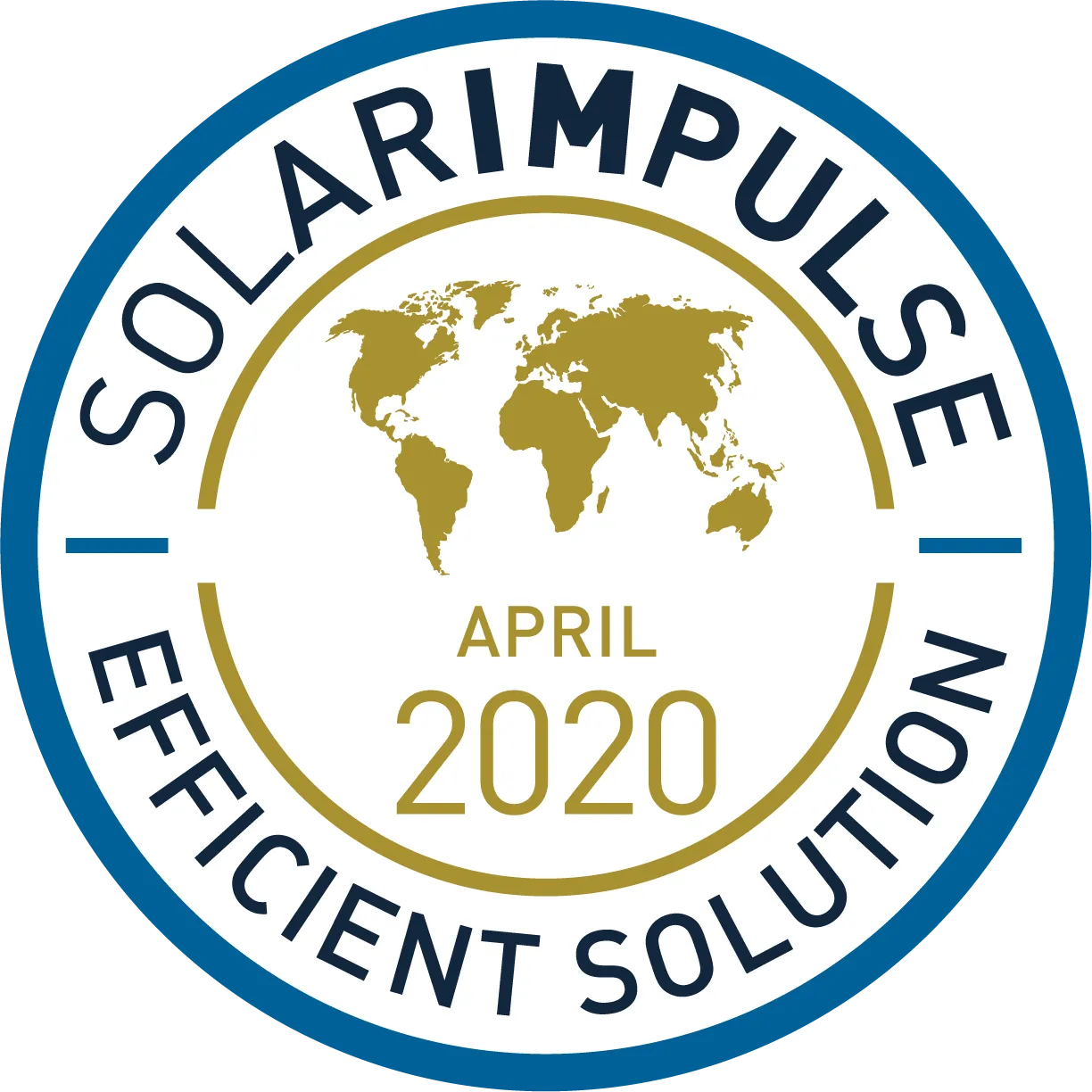
Labelled solution
In April 2020 our Community solution was labeled by the Solar Impulse Foundation.
Launched after the round-the-world flight in a solar airplane, the Solar Impulse Foundation aims to select 1000 clean and profitable solutions for the future of the planet.
This distinction motivates us to continue developing products that promote the use of renewable energies.
FAQs
The interested owner commissions an electrician to submit a request to the local network operator and plans to modify the electrical panel to replace the meters.
Climkit signs a management contract with a single self-consumption group's representative, to whom it pays for the sale of solar energy collected from residents. In the case of a condominium, the self-consumption group's representative is usually the condominium's administrator. The administrator then shares the income between the people concerned or includes it in the condominium's accounts.
There is no particular type. Self-consumption groups can be set up in buildings of any age and with any type of use (residential, industrial, commercial, adjoining cottage).
Every 15 minutes, Climkit calculates the proportion of energy produced by the PV installation and the proportion of energy drawn from the grid for the whole building and then applies this "grid energy/solar energy" ratio to the consumption of each resident. In this way, consumers can adapt their behaviour according to the amount of sunshine available, so as to consume more solar energy.
This is a grouping for own consumption under Article 17 of the Swiss Energy Act (EnA). It consists of grouping several consumers behind a single point of connection to the electricity grid in order to share the production from the photovoltaic panels installed on the roof or facade of their building.
Climkit Community distinguishes between solar energy consumption and energy from the grid for each resident, with a distinction between peak and off-peak tariffs.
The recommendation is to charge a maximum of 80% of the tariff that each resident would pay to the local electricity distributor if they were not part of a self-consumption group, in accordance with art. 16 of the Energy Ordinance (OEne).

